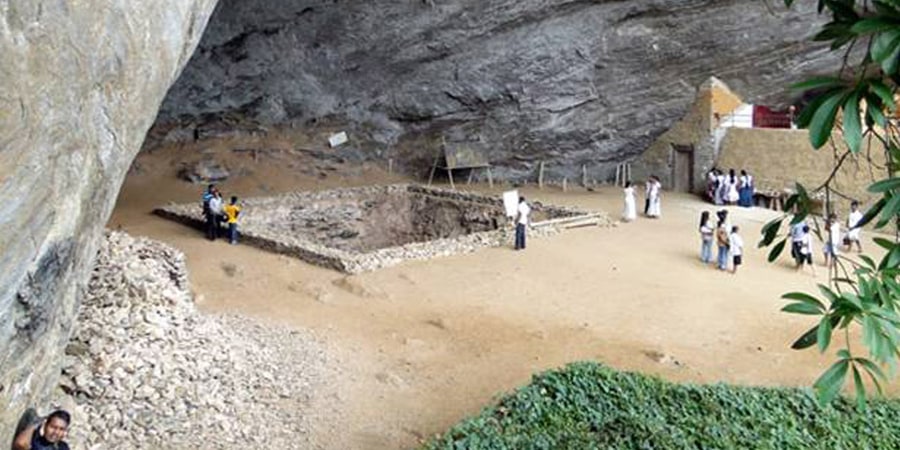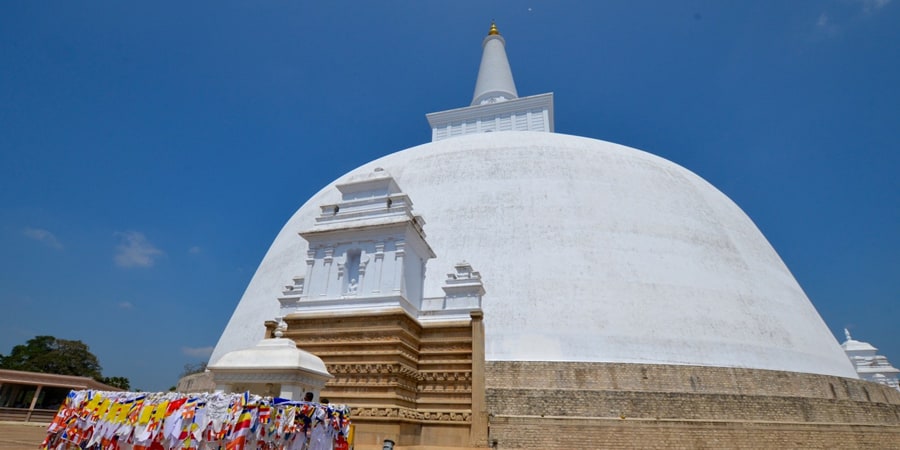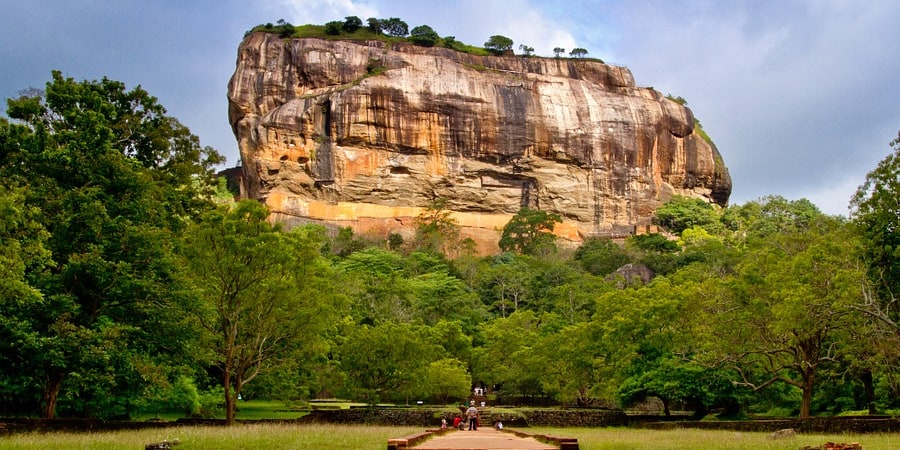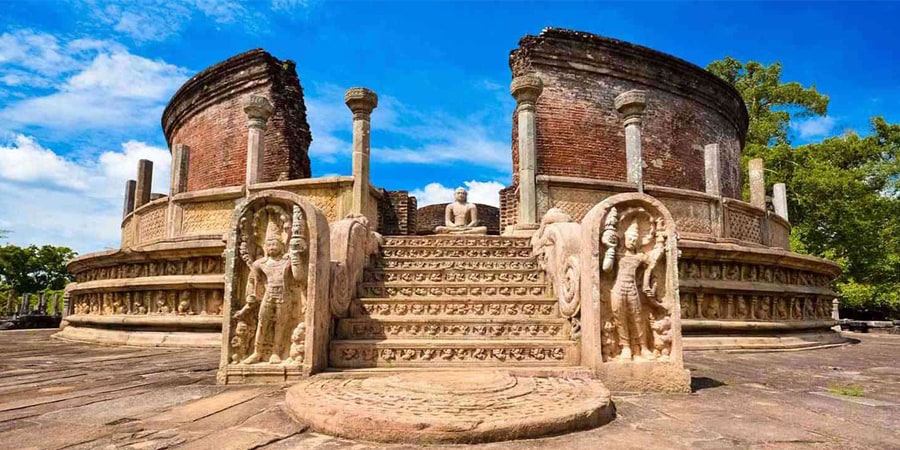Discover the island’s rich heritage with this special holiday package in Sri Lanka which takes you to sites or great archaeological significance. Step back in time as you visit these historic places and glimpse what life was like in days gone by.
13 Nights / 14 Days
Once checked in, if you are up to it, walk around Sri Lanka’s commercial hub. There are many places of interest, some dating to the Dutch and British colonial periods. Some of these colonial buildings have been refurbished and restored to high end shopping malls with many eateries. In the evening, stroll around the Independence Square, a monument built to mark Sri Lanka’s independence from the British colonial reign.
In the morning after breakfast, transfer to Kalawana, en route visit Fa Hien Cave.
The cave named after the famous Chinese monk who explored Sri Lanka way back in the 4th century A.D. is famous for its prehistoric habitation by the ancient hominids. Historically significant ancient artefacts had been unearthed in the Fa Hien Cave including a complete skeleton of our predecessor’s dating back to the latter Pleistocene era. Other highlights included ruins of ancient hearths, other remnants of ancient plants and human occupants. Carbonated evidences state that, the cave was a site of human inhabitancy more than 33,000 years ago with the last inhabitants occupying the space in the middle Holocene period. Amongst, the bones of adults and children discovered at the site, a woman's remains (Dubbed Kalu Manika) dating back 5,400 years and a young child's remains around 6,850 years were also found. The earliest inhabitant of Fa Hien cave occupied the island during the same period as the Cro-Magnon man in Europe. The dental make up of the findings indicate that, the earliest Sri Lankans relied on a diet of grain, nuts and other plant seeds and continued their living as hunter gatherers till at least the 8th century B.C.
Arrive at your hotel which is a pillar in eco friendly architecture. The hotel was built around large boulders where each granite boulder was incorporated into the architecture.
Day 03 of the itinerary will take you through the mystical Sinharaja rain forest, a UNESCO declared World Heritage Site. You will indeed be dazzled by the high concentration of flora & fauna all brought down to one place. What you will find hard to overlook is the ‘bird wave’ spectacle where a large number of birds converge for feeding. These flocks have a variety of birds that swoop pass thick foliage that covers the rain forest. Those visiting Sinharaja can make their way in using either two trek paths one that leads you to the Sinhagala and the other to Mulawala.
Nevertheless, you are always welcomed to enjoy a lovely evening at the hotel which will also give you a dose of the untouched environs of the rain forest.
Day 04 brings you more adventure as you set foot at the Palaeo Birodiversity Museum Park in Ratnapura. The Museum would be one which holds importance as it houses the artefacts of the prehistoric man of Sri Lanka, pristine gems unearthed and those well protected flora too.
Afternoon has more in store for you. You will be escorted to the Batadombalena cave which was one home to the prehistoric man. Commonly referred to in Sinhala as ‘Balangoda Manawaya’ is the prehistoric man believed to be the idealist behind the Balangoda culture. The Balangoda man is said to have used tools of which in this instance gave archaeologists sufficient evidence that those inhabitants were quite believably of the Mesolithic period.
The usage of such tools are said to be the ‘geometric microliths’ which is evident in the evolvement of the equipment. Such similar caves can also be found at Bundala and Beli-lena both placed in the coastal region of the country.
After a good day’s exploration you can always return to your hotel and unwind in the breathtaking views surrounding it.
Day 05 has very much more for you to discover as you go forth to the mysterious Beli Lena en route to Nuwar Eliya.
Your morning will indeed be one filled with intrigue for Beli Lena showcases the Island’s prehistoric remains from faunal to human artefacts all uncovered during excavation. These artefacts are believed to be over 30,000 years old and are considered one of the oldest remains to be found in the world. What you may also find very interesting is evidence uncovered proving the use of fire at the time.
Have lunch and depart to Nuwara Eliya where its cold weather awaits you and your loved ones. The place is dubbed ‘Little England’ for its lush landscape and of course famous weather too. Also, what will have you occupied on your way are picturesque tea plantations spreading to infinity, truly hard to forget.
You can spice-up your morning with a visit to the famous Horton Plains. These plains are the highest in Sri Lanka and are quite a spectacle to the eye. Studies reveal that the place was once inhabited by pre-historic man which is evident by the grains uncovered believed to have been consumed by them.
Next on the list is the World’s End which every visitor would find quite thrilling for it is an extremely steep gorge with a drop of thousands of feet. En route to World’s End you will be treated to the exquisite sceneries of the Montana forests teeming with endemic birds and also the Baker’s Falls renowned for its cascading beauty.
Enjoy your lunch as you are about to unravel the mysteries of Kandy.
Kandy is of course the Kingdom which stands strong in the minds of every Lankan for it houses the Tooth relic of the Buddha at the famed Temple of the Tooth or the Daladha Maligawa. It is the last kingdom of Sri Lanka and subsequently fell into the hands of the British and was later used as a centre to store ammunition.
Let your morning be full of cheerful sights of young elephants playing alongside their kith and kin at the Pinnawala Elephant Orphanage which houses injured and orphaned elephants. The Orphanage is one that strives strong to protect the Asian Elephant.
Your next stop would be at the Ibbankatuwa burial site before proceeding further to Dambulla.
The tombs have been dated back to 750 BC to 400 BC and have uncovered personal property such as necklaces, clay pots, beads etc. These tombs are of very high importance to Sri Lanka and India alike as it portrays the countries’ close ties evident from the gems embedded in the necklaces which are only found in India. The rituals are said to have been practiced by a small tribe in the area.
You are welcome to relax at your hotel once you arrive in Dambulla.
Help yourself at breakfast and proceed to Sigiriya.
The Sigiriya fortress is the brainchild of King Kashyapa. The fortress attracts many thousands of tourists for its intricate and incomprehensible engineering assisted in creating this wondrous palace on a rock. The water fountains that operate un-aided to date are proof of the times sophisticated hydraulic system which bewilders present day engineers and architects. The Frescoes are indeed an embodiment of the impeccable artistry of our ancestors.
Travelling up the rock you will see the Mirror Wall laced with graffiti which dates back to the 7thCentury. The Mirror Wall is believed to have been initially plastered with different preservatives of which traces of it could be witnessed even today.
Ascending the rock you will be welcomed by a flight of steps carved in the shape of a Lion’s paws, again depicting the marvellous architecture of the time.
After descending this magnificent rock you can enjoy your lunch and proceed to Polonnaruwa.
Polonnaruwa is a city that has watched and survived its many invaders make their way in and out of the Island. What you will see here is the immaculate engineering present in its man-made lakes and religious monuments influenced by its many Indian invaders of the 12th and the 13th Centuries. King Parakramabahu in his successful attempts of unifying the country established the city as his capital and thereafter progressed to improve its marvellous hydraulic system.
Head back to Dambulla and unleash your taste buds on some finely barbecued delicacies at the hotel.
You will head to Ritigala in the morning.
Unlike stereotype monasteries the Ritigala Monastery that housed the Pansakulikas monks does not contain stupas, temples or image houses. From its long paved paths, large stone-lines and stepped reservoirs’ and uncommon doubled platforms the architecture of the Pansakulikas monasteries certainly evoke mystery in the minds of every visitor. Ritigala is also renowned for its 70 rock caves believed to have been inhabited since the 1st century BC.
Once after your breakfast you will tour the beautiful City of Anuradhapura.
Anuradhapura is a city that is spirituality connected to its many thousands of pilgrims for it holds the most venerated Bo-tree under which the Buddha attained enlightenment. The city is of course one which is packed with archaeological remains since it was the first ancient capital of the country. The city also feeds the many paddy cultivations with its large hydraulic system thanks to its canals and water bodies.
Enjoy your lunch and depart to witness the ‘Land of the Lakes’ or as we call it the Wilpattu National Park. The water bodies are made up of natural depressions owing to the fact that the country does not possess natural lakes. The Wilpattu forest is home to a large number of ancient ruins from centuries ago that can be witnessed to date. The park is in its successful attempts strives to protect the Sri Lankan sloth bear.
Get on board a safari and treat yourself to unimpeded glimpse of the Sri Lankan Leopard strolling through the wilderness.
Your evening will be all the more relaxing as you sit by the camp fire and savour some finely barbecued dishes.
Early morning en route to Wilpattu you can drop by at Pomparippu and witness the ruins of Kuveni’s Palace the consort of Vijaya the Indian Prince who set foot on the Island following his banishment by his father 2,500 years ago. Sri Lankans are considered to be descendants of Prince Vijaya.
What is also intriguing is that Pomparippu is an ancient burial site with 14 burials been excavated to date with the skeletal remains of 23 individuals. The urns were placed in pits covered with boulders of limestone. Also quite interesting to learn is that the skulls were placed in black and red ware which archaeologists try to connect with such similar burial traditions of South Indian origin particularly Dravidian. Alongside the skeletons were artefacts of copper bracelets, beads and cert tools unearthed which is evident of the time’s highly advanced use of materials.
However, recent findings prove otherwise owing to quite a few differences between ware found in Pomparippu and those of South India. Absence of burnishing in the local ware is one such difference.
The site is where Prince Vijaya is said to have landed. Thambapanni as it was known then because of its copper colour soil due to it been rich in iron ore. Kudurumali is quite a beautiful place as it has molten rock strewn about and gives its visitors a breathtaking view of the sea. Kudurumali also promises its visitors a glimpse of Southern India and the lighthouse on Rameshwaran Island usually on clear days. It is believed that Kudurumali Point was once home to a statue of a horseman with a lantern but there is no such evidence to prove so today.
You can always partake in a hearty and interesting conversation on the Villagers’ of Wilpattu with your local expert as you sink into your favourite barbecue.
Your morning brings you the blissful experiences of Negombo.
Negombo will give you a good dose of the beautiful beaches of the Island and the monuments of the colonial era. Partake in exploration of ancient glory.
Leisure at its highest, relax by your favourite beach.
You will safely be transferred to the Bandaranayake International Airport from Negombo.




